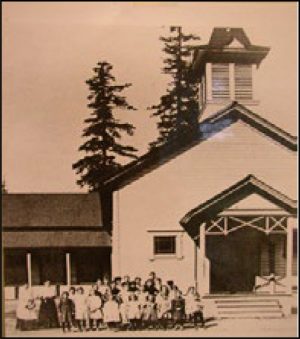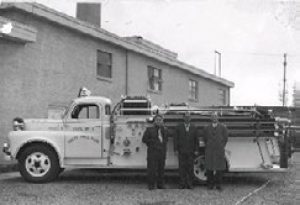Home / History and Profile
History and Profile
Location and Planning Area
Lacey is located in Thurston County, Washington, between Olympia and the Nisqually River, at the southern end of Nisqually Reach. The city encompasses a total area of 16.51 square miles.
History
The following is a brief history of the founding and development of Lacey. For a more detailed history of the region and its indigenous people, visit the Lacey Museum historical timeline.
You can also watch a video of the history of Lacey below.
Early Settlement
The early history of Lacey is similar in many ways to that of other undeveloped areas in Thurston County, with early dependence on a resource-based economy such as farming and logging. The area now known as Lacey was first settled in 1848 by David and Elizabeth Chambers. Their donation land claim is located in what is now the modern-day retirement community of Panorama. In 1852, Isaac Wood settled in what is now the Old Lacey Historic area, and later established a brewery in Olympia. The area came to be known as “Woodland.”
Late 1800’s
The Woodland community continued to grow through the end of the 19th Century. The first school was built circa 1886. In 1889, a logger named Isaac C. Ellis built a large racetrack and stables on 100 acres of land just west of what is now Homann Drive.
The Northern Pacific Railroad completed tracks to the area and built a station in 1891. That same year, citizens petitioned for a Woodland post office, but because a town named Woodland already existed less than 100 miles away, they had to choose an alternate name. It is believed that O.C. Lacey, a local attorney, may have suggested his own name for the post office.
In 1896, the first logging mill was built in Lacey; Benedictine monks also established St. Martin’s College that year.

Early 1900’s
The early part of the 20th Century saw Lacey build a reputation as a recreational destination, with a number of resorts, campgrounds, dancehalls, and golf courses opening between 1910 and 1932.
At the same time, Lacey experienced a decline in industrial activity after the Union Lumber Mill shuts down. By 1931, the mill is torn down and the post office is closed.
Mid 20th Century
Until World War II, the primary residential neighborhood of Lacey consisted of a small concentration of homes north of Pacific Avenue and west of Carpenter Road, currently known as the Lacey Historic Neighborhood. Individual residences were scattered throughout the rest of the community. After World War II, Lacey experienced a housing boom.
This period marked the establishment of Lacey’s first Fire Department, Municipal Water Service, and School District. In 1958 the Thurston County Fair permanently moved to its Lacey location.

Late 20th Century
In 1961, the Lacey Area Chamber of Commerce is created to promote the community of Lacey. During this same time period, it became increasingly evident that the status of Lacey would change. While the sentiment in the Lacey community was primarily anti-city, it became a common belief that there were only two choices for Lacey’s future: incorporate or be annexed by Olympia. A measure to incorporate the City of Lacey is initially defeated in 1964, but two years later the City successfully incorporated.
The 1960’s saw the inauguration of Lacey’s first library, Police Department, Water Department, and weekly newspaper, the Lacey Leader.
With the annex of Hawk’s Prairie in 1990, the population of Lacey doubled. In the 1990’s the City welcomed an Amtrak station and an Intercity Transit Center, as well as a Community Center and South Puget Sound Community College satellite campus.
2000’s
In the early 2000’s Lacey experienced significant evolution in key areas—expanding its transportation infrastructure, social services, and recreational facilities with the development of the Senior Center building in 2003 and the Regional Athletic Complex in 2004.
The City of Lacey was awarded the Green Power Community Designation in 2007 by Environmental Protection Agency, and established itself as the largest park system in Thurston County with the acquisition of Greg Cuoio Park in 2011.